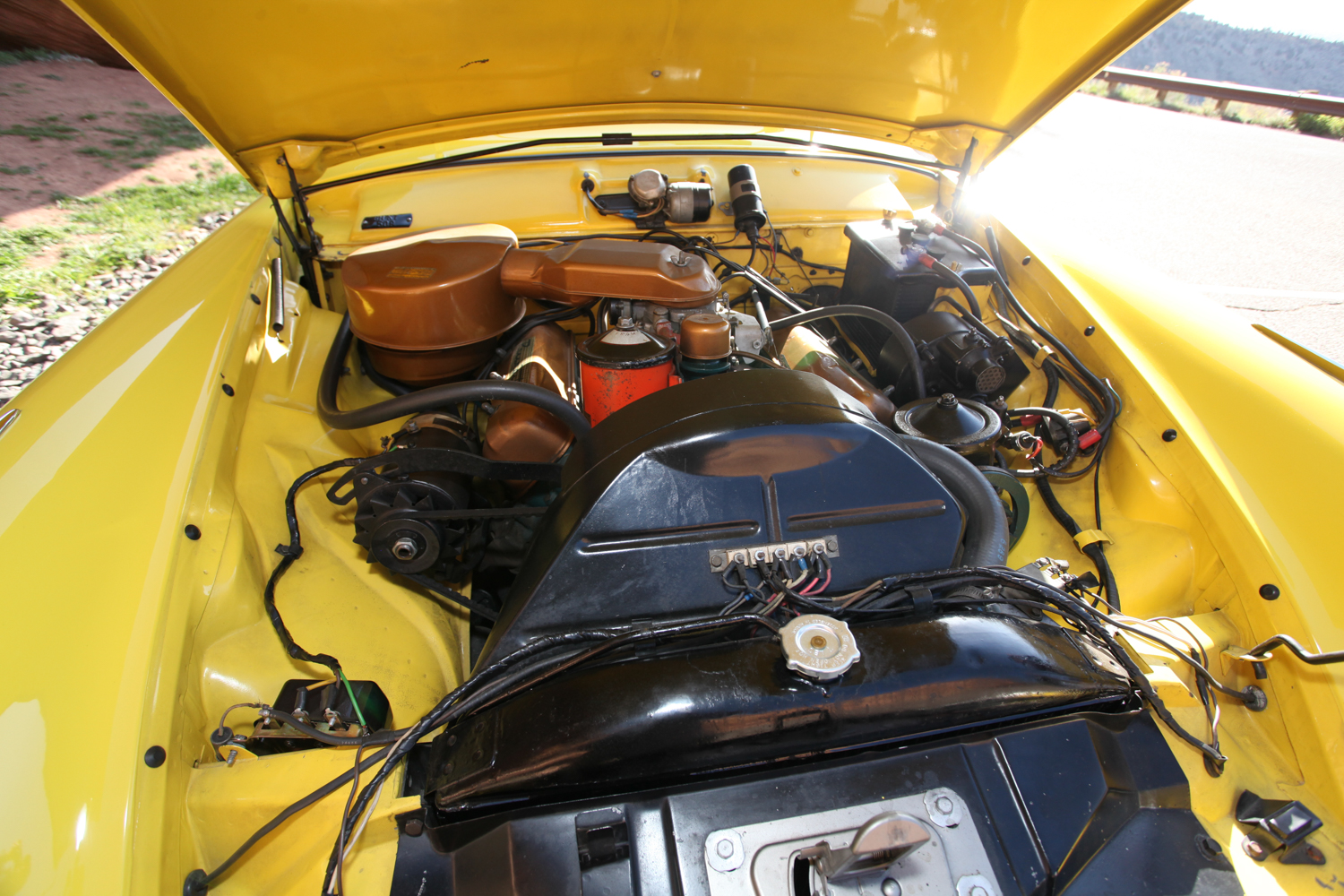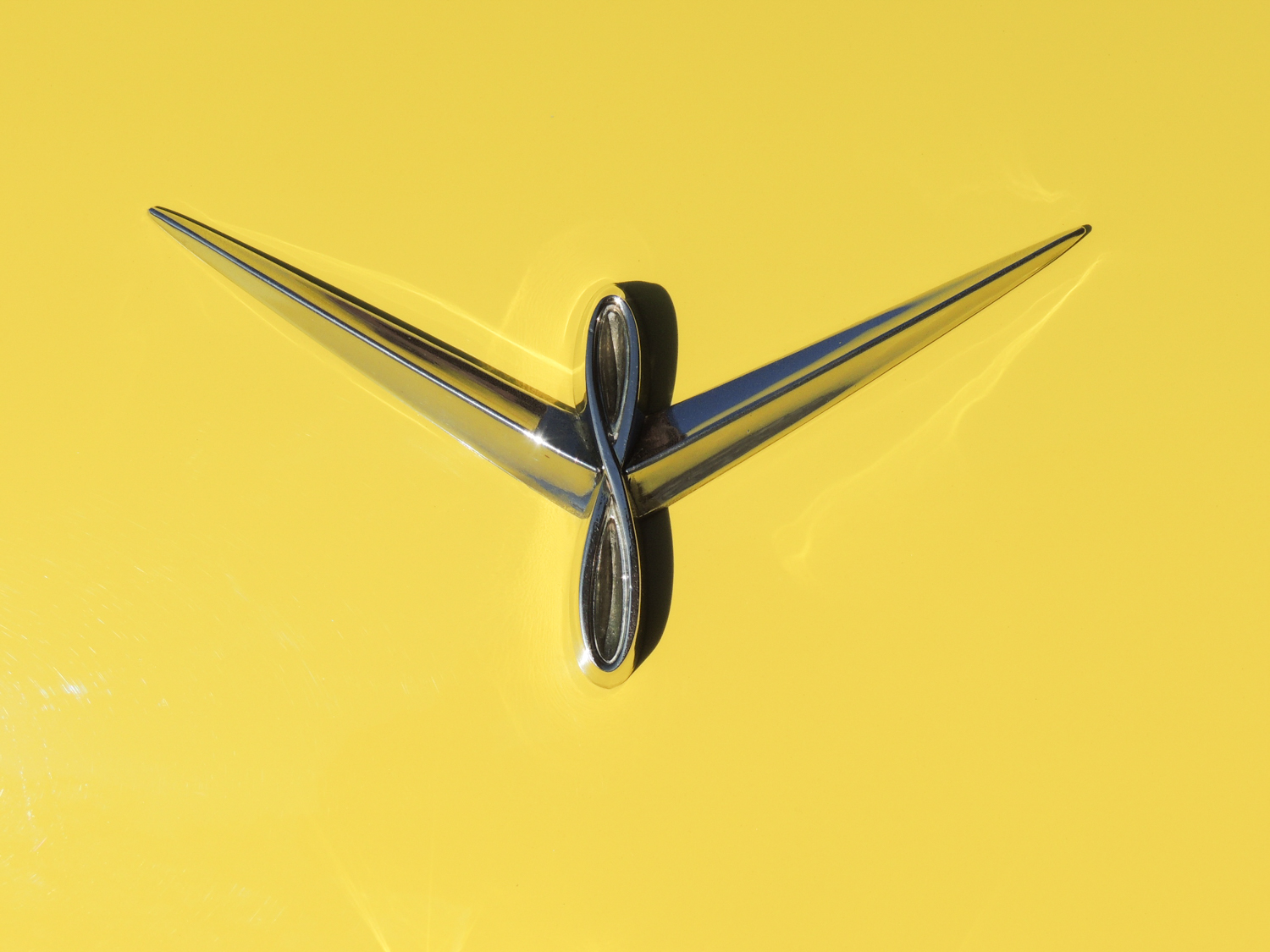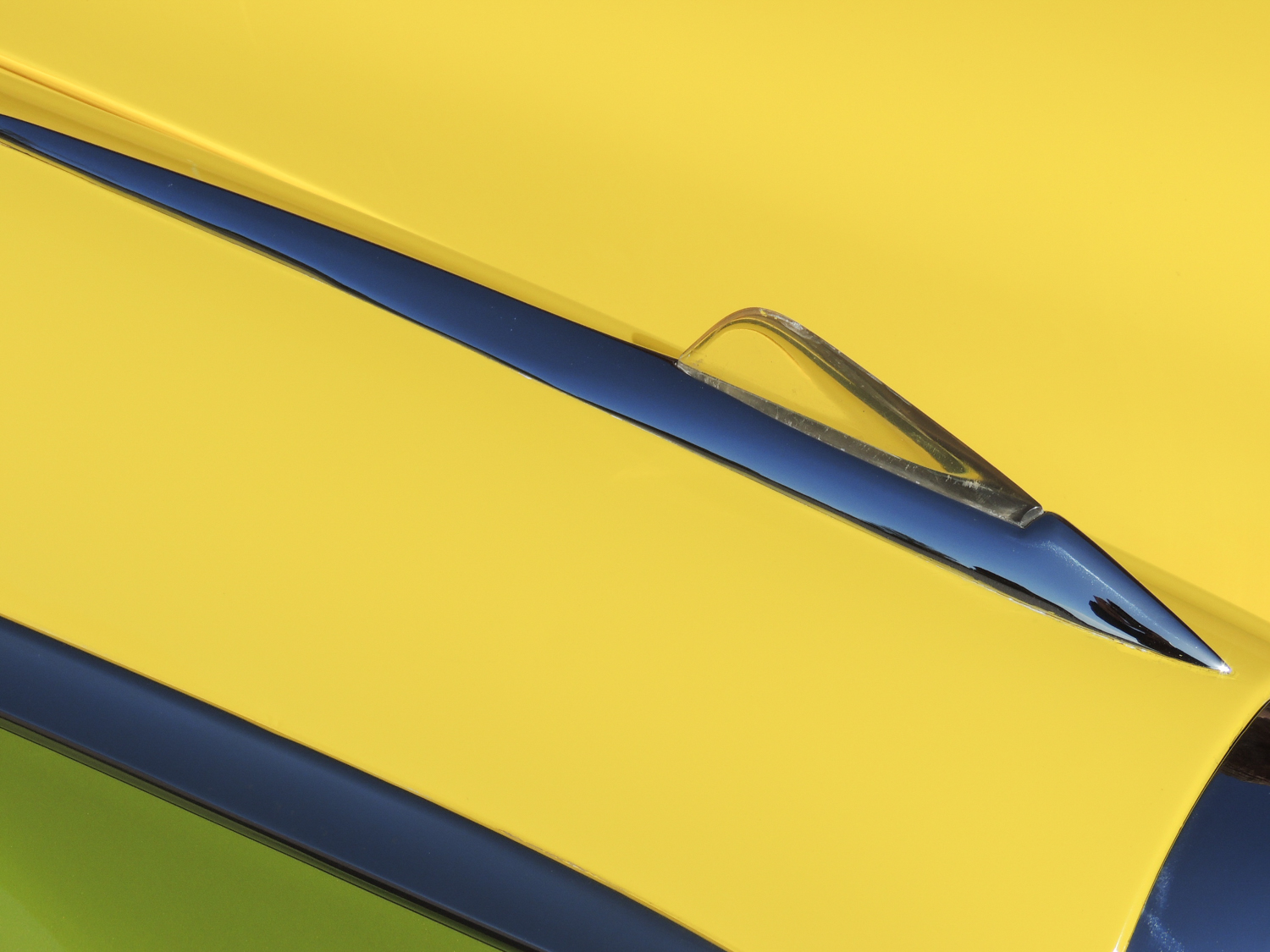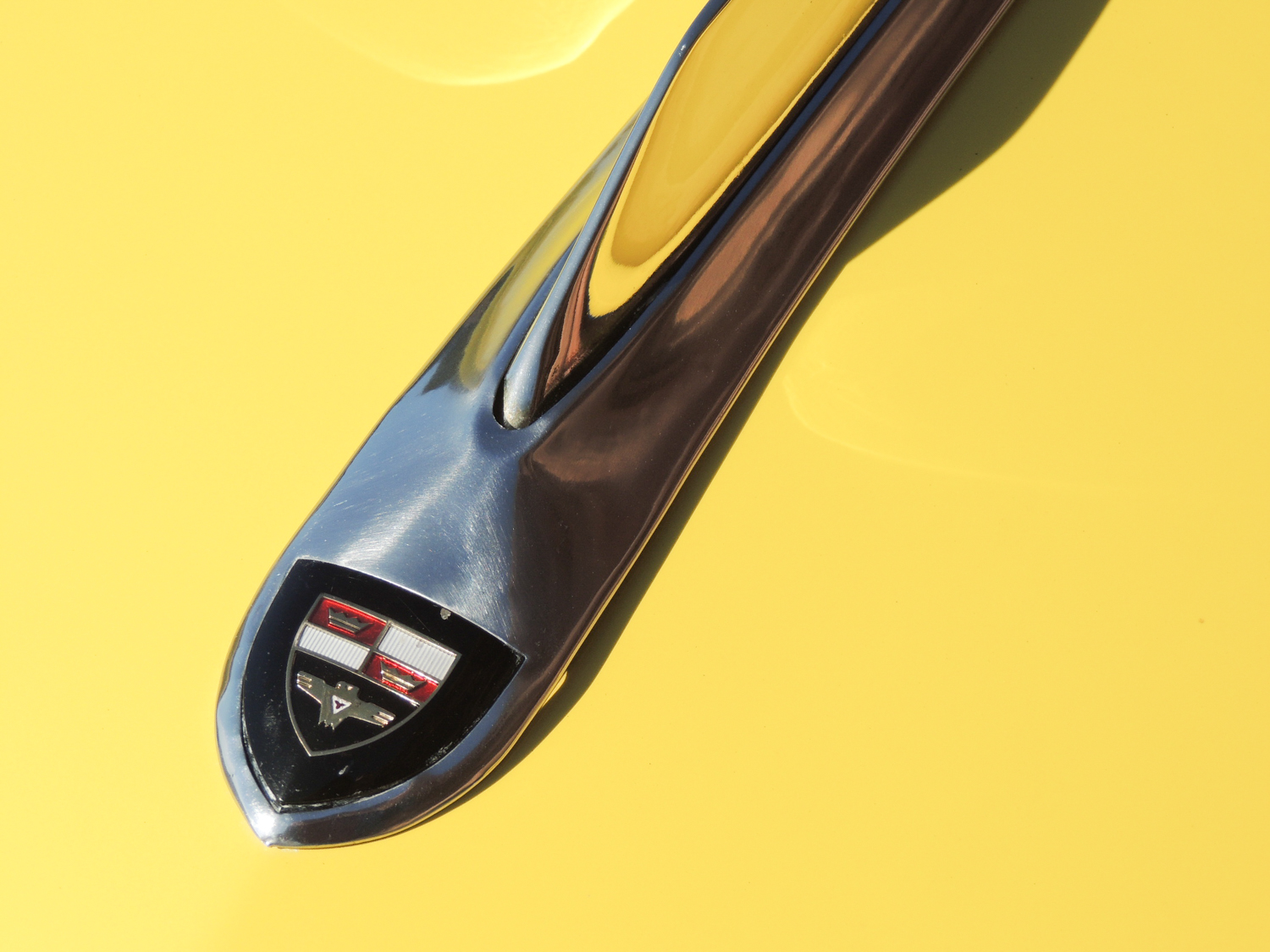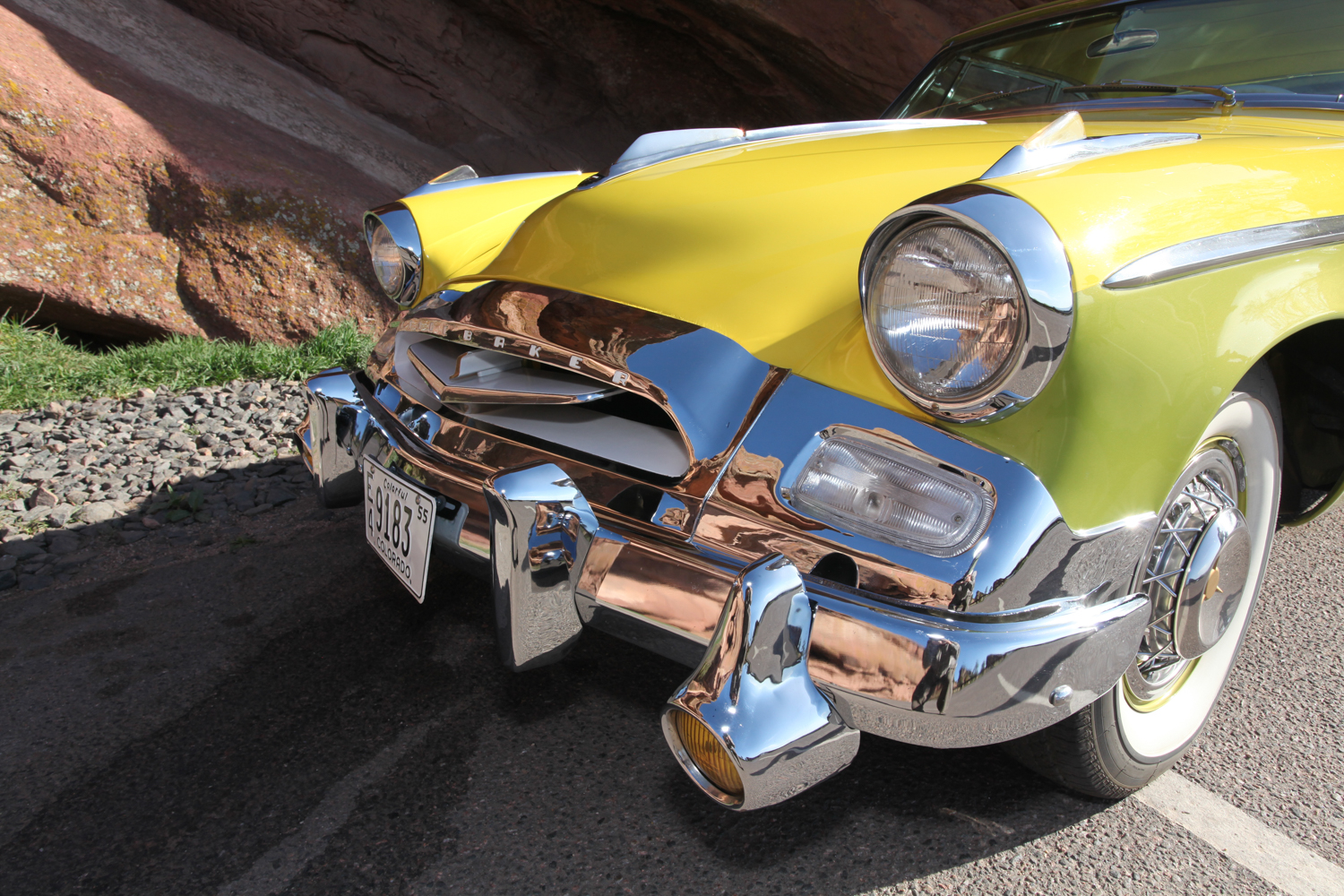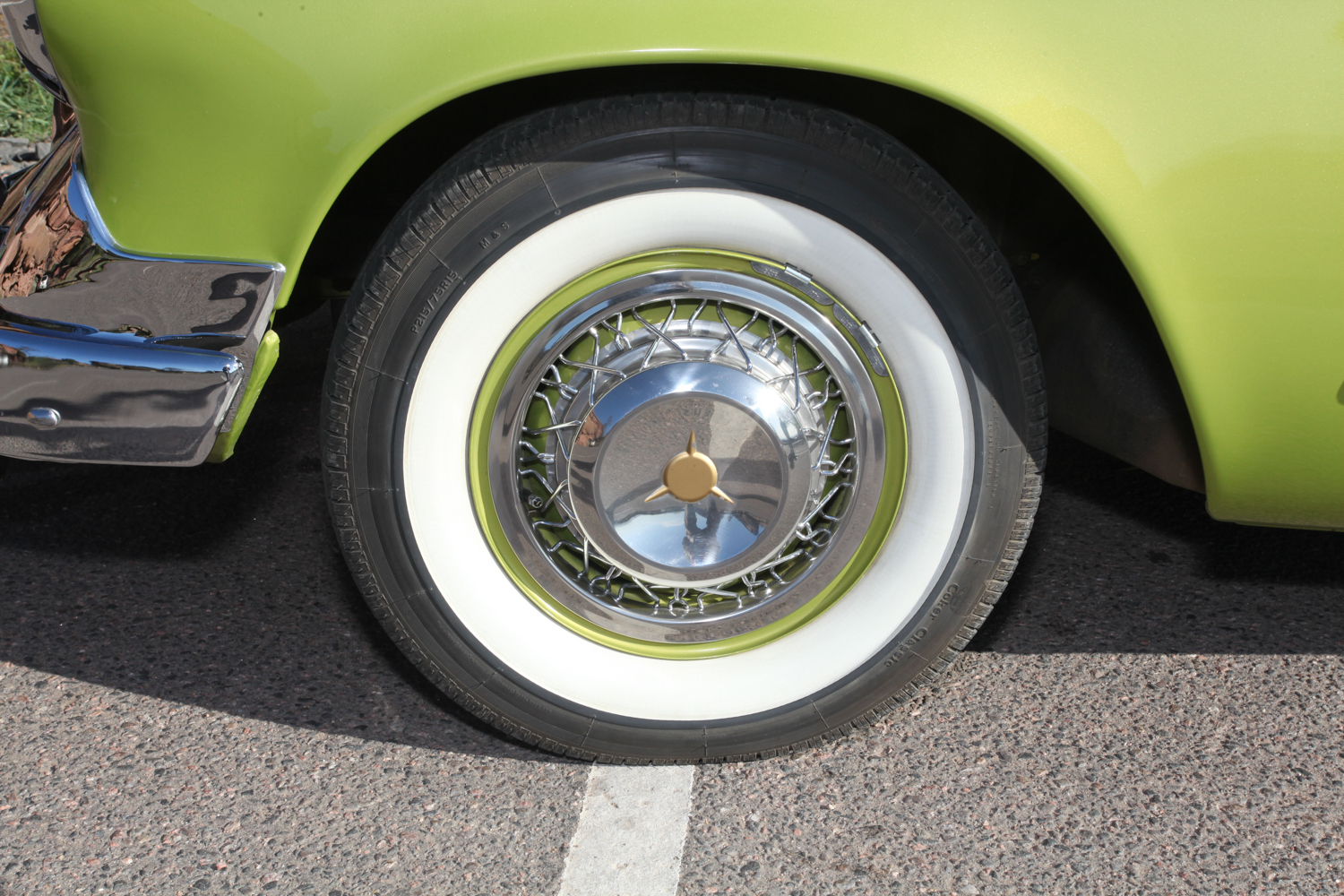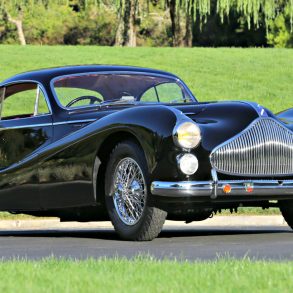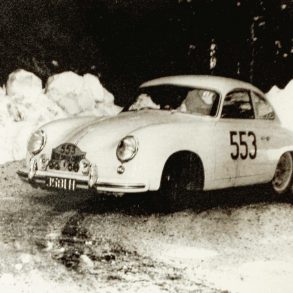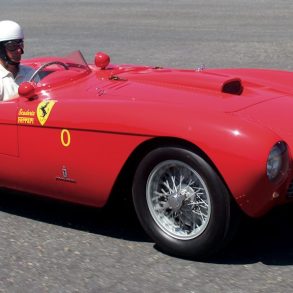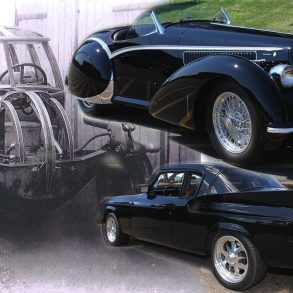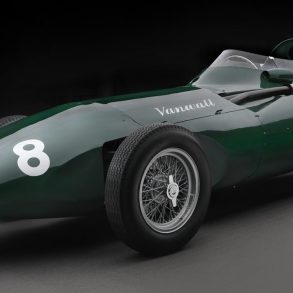The Studebaker Corporation built some significant and beautiful vehicles during its more than a century in business. Their horse drawn vehicles, from Conestogas to hearses, were known for their quality and durability. The automobiles built with the Studebaker name on them ranged from buggy-like electrics to some of the prettiest American cars ever built. There were several high points in Studebaker design in the 1930s and the 1950s. Some say the Avanti was the prettiest Studebaker ever built, and it was unique and stunning, but, in my humble opinion, no other Studebaker, in fact no other American car nor most European cars, can hold a candle to the 1955 President Speedster.
“Wheelbarrow Johnny” and the Beginning of a Company
The Studebaker family came from Germany and settled in Philadelphia in 1736. They were builders and blacksmiths and earned a reputation for building quality wagons. In 1835, John Studebaker moved his family west to Ashland, Ohio, for a new start on the frontier. He built a Conestoga-type wagon drawn by four horses for the move. Fifteen years later, the family moved again to South Bend, Indiana, where they would stay – or at least most of them would.

Two of John Studebaker’s five sons, Henry and Clement, created H & C Studebaker in 1852 with a total investment of $68.00. The business specialized in blacksmithing, woodworking and custom wagons. Their first wagon, built for a local farmer, took seven days to complete and cost the new owner $175. The wagon was painted red and green with “Studebaker” on the side in yellow letters. The next year, younger brother, John Mahler, decided to follow so many others to California to make his fortune mining for gold.

When John Mahler arrived in California, after the long trek from Indiana, a fellow named Joe Hinds called out to the new arrivals and asked if anyone knew how to build wagons. John Mahler answered that he did, and Hinds immediately offered him a job building wheelbarrows. Initially, John Mahler refused, believing he had a better opportunity in the search for gold. Another in the crowd, though, convinced John Mahler that he could search for gold any time, but having a job with regular pay was a real benefit in what eventually became known as Placerville. Studebaker caught up with Hinds and accepted.
H & C Studebaker was doing very well building wagons, and, in 1856, received an order to build 100 wagons for the Army. Clem wanted to expand the business, but he needed cash. John Mahler learned of their interest in expanding in the letters frequently exchanged with his family in Indiana and decided to return home. “Wheelbarrow Johnny,” as he had become known, had saved $8,000 and wanted to invest it in the business. He returned to Indiana, in June 1858, but Henry was reluctant to expand, so Wheelbarrow Johnny bought his share in the business.

By 1860, H & C Studebaker was building a wide range of wagons of all types, from simple farm wagons, to fancy buggies, to children’s wagons to be pulled by a dog or goat. Another brother, Peter, had a general store in Goshen, Indiana, and he became the first dealer in Studebaker wagons. Then came the Civil War. The Studebakers built thousands of wagons for the Union Army during the war, and many soldiers became very familiar with the company name and the quality wagons they built. That set the company for their next rush of orders. After the Civil War, many former soldiers and as many regular citizens were looking for opportunities in the west and needed wagons for the move. The result was the creation of more sales outlets and the use of the railroads to ship finished wagons all over the country. By 1867, 6000 Studebaker wagons were being built every year, and it was time to take the next step. Sadly, the Barouche that Abraham Lincoln drove himself and his wife, Mary, to Ford’s Theater was a Studebaker making it the most infamous vehicle in the Studebaker National Museum in South Bend.

Studebaker Brothers Manufacturing Company was incorporated on March 26, 1868. Peter became the head of sales and marketing, which resulted in one of the shortest and clearest agreements ever signed in corporate America:
“I, Peter Studebaker, agree to sell all the wagons my brother Clem can make.”
Peter Studebaker
“I agree to make all he can sell.”
Clem Studebaker
It was an agreement that could actually be read and understood.

There were setbacks. Fires in 1872 and 1874 damaged facilities. Brother Jacob joined the company but died young, in 1885, and Peter died in 1897. Frederick Fish, John Mahler’s son-in-law and a lawyer, became president after Peter Studebaker’s death. Unlike the brothers, Fish was interested in new technology and created a budget to look into horseless carriages. Around that same time, the company had been building bodies for the Electric Vehicle Company for their electric taxicabs. Neither Clem nor “Wheelbarrow Johnny” were convinced that horseless carriages were a good business idea, but they did not oppose Fish’s efforts. When Clem died in 1901, John Mahler was the last of the brothers involved in the company.

Fish determined that automobile manufacture was a good idea for the company, and in 1902, Studebaker introduced a line of modest electric cars. The Studebaker electrics were hardly innovative, other companies were building more advanced cars, including Oldsmobile, Rambler, and Ford. But the Studebakers had a reputation for being well built and reliable, so sales were good. Top speed was 13 mph and a charge was good for about 40 miles.
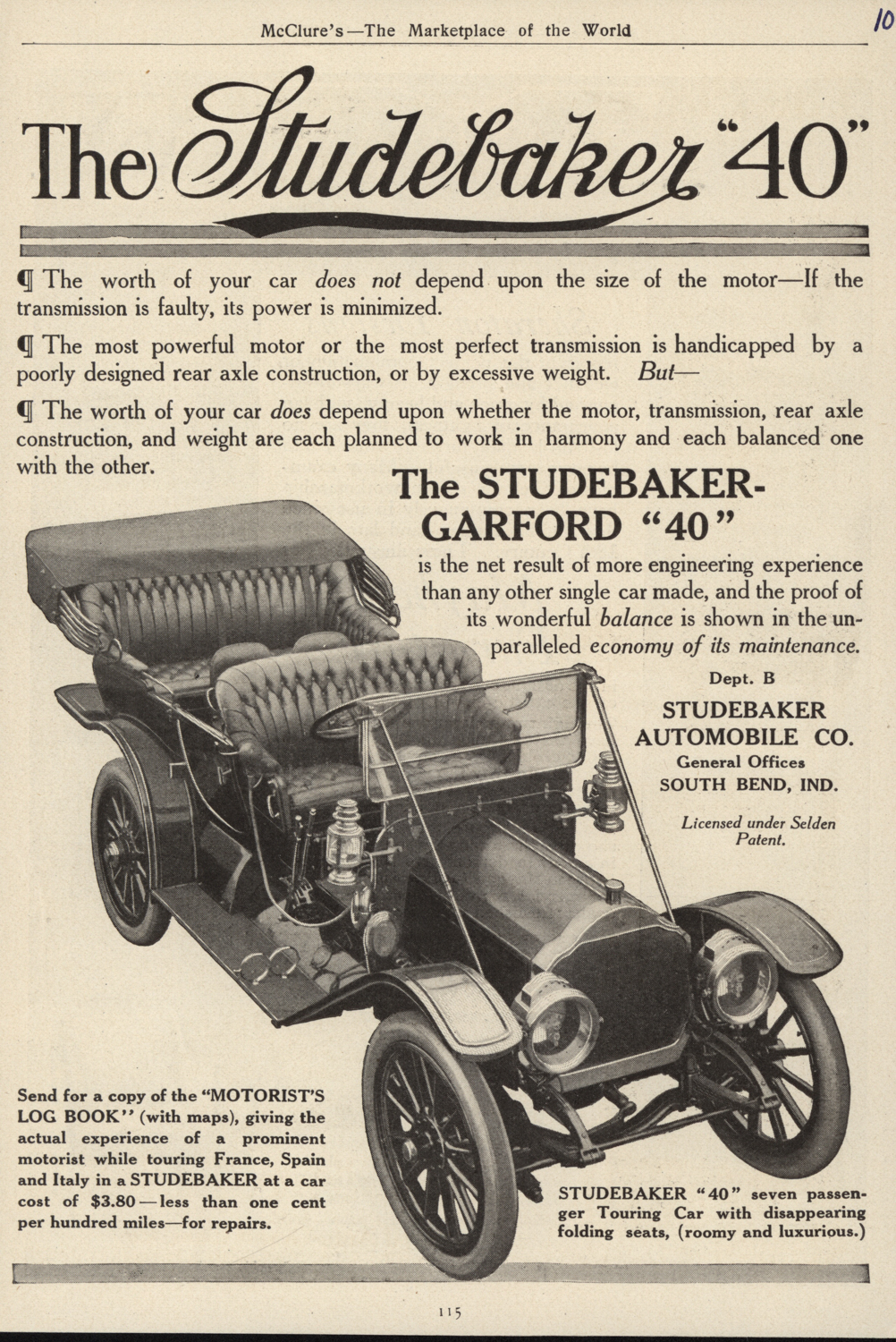
It was soon obvious that automobiles with internal combustion engines could go farther and faster than the electrics of the time. John Mahler preferred electrics because they were quieter and easier to start. But he did not object when Fish acted on what he believed was a need for change. Fish joined with Garford Company in Cleveland, Ohio, to build the Studebaker-Garford automobile. Garford would build the chassis and engine, and Studebaker would produce the bodies. The Studebaker-Garford was expensive, especially when compared to the cost of a Model T. Fish saw the need for Studebaker to produce a lower-priced car, so they joined with E.M.F., a company that needed access to a dealer network like Studebaker’s. Unfortunately, E.M.F. quality was poor, so Fish made a decision to merge with them to form a new company through which Studebaker had more control over production and quality. The new company was the Studebaker Corporation. “Wheelbarrow Johnny” was the Chairman, and Fish was the President.
Changes came quick for the new company. Electric cars and the Studebaker-Garford were gone by 1913, and Studebaker ranked fourth in sales with 24,255 cars sold. Compared to Ford, which sold about 189,000 cars, Studebaker was still a small company. Wagons were still selling well, but the automobile business needed a boost. The company restructured and decided to produce two models. A new President, Albert Russell Erskine, joined the company in 1915. Two years later, John Mahler Studebaker died; there were no longer any members of the Studebaker family in the company. As the war in Europe dragged on, there was a drop in sales, but the buildup for the war easily offset that slump. Wagons and trucks were needed, especially after the U.S. entered the war.
Studebaker Without a Studebaker

After WWI, Studebaker had to get back to civilian production. As a result of mergers, most Studebaker production was in Detroit with wagon production in South Bend. Before his death, John Mahler had gotten an agreement that any new plant for auto manufacturing would be in South Bend. He anticipated that wagon production would end, and he wanted the workers in South Bend to be able to continue to work for the company. In May 1920, Wheelbarrow Johnny was proven right; the wagon business was sold. It would be automobiles only for Studebaker, and they would be built primarily in South Bend.
Business was very good for Studebaker in the early 1920s, but it could have been much better. Erskine had a policy of giving large dividends to investors no matter how good or bad sales were. He believed it would encourage investors even in times of poor sales. This policy was continued throughout the company’s history, and it was damaging. Had lower dividends been given, more money would have been available for expansion and emergencies. With more production capacity, Studebaker could have sold more cars.

The latter part of the 1920s was a mix. Some of the new models were among the best looking cars in the country. Plants in Detroit were closed and the South Bend facilities were expanded. There was a new small car called the “Erskine,” but it was a flop. The new President Straight Eight, though, was a success – it was a beautiful automobile. Together with changes to the Dictator and Commander models, 1928 was a very good year.

Then came 1929. Early that year, the company invested in the Pierce Arrow Motor Car Company. It looked like a good business decision, and Pierce Arrow was reorganized. With the beginning of the Depression, sales tanked. Studebaker increased truck production and added a new model, the Rockne Six, named after famous Notre Dame coach Knute Rockne. It was a good car – what the Erskine should have been. Studebaker and Pierce Arrow were building good cars, but the market was terrible. In 1931, Studebaker lost $8 million, but Erskine still gave a dividend of $500,000. That left the company with no capital. A merger with White Motor Company could save Studebaker. White would get access to Studebaker’s excellent dealer network, and Studebaker would get cash from White. A sale, though, was blocked by White investors, who believed it was a raid on White’s finances. That put Studebaker into Chapter 11 bankruptcy.
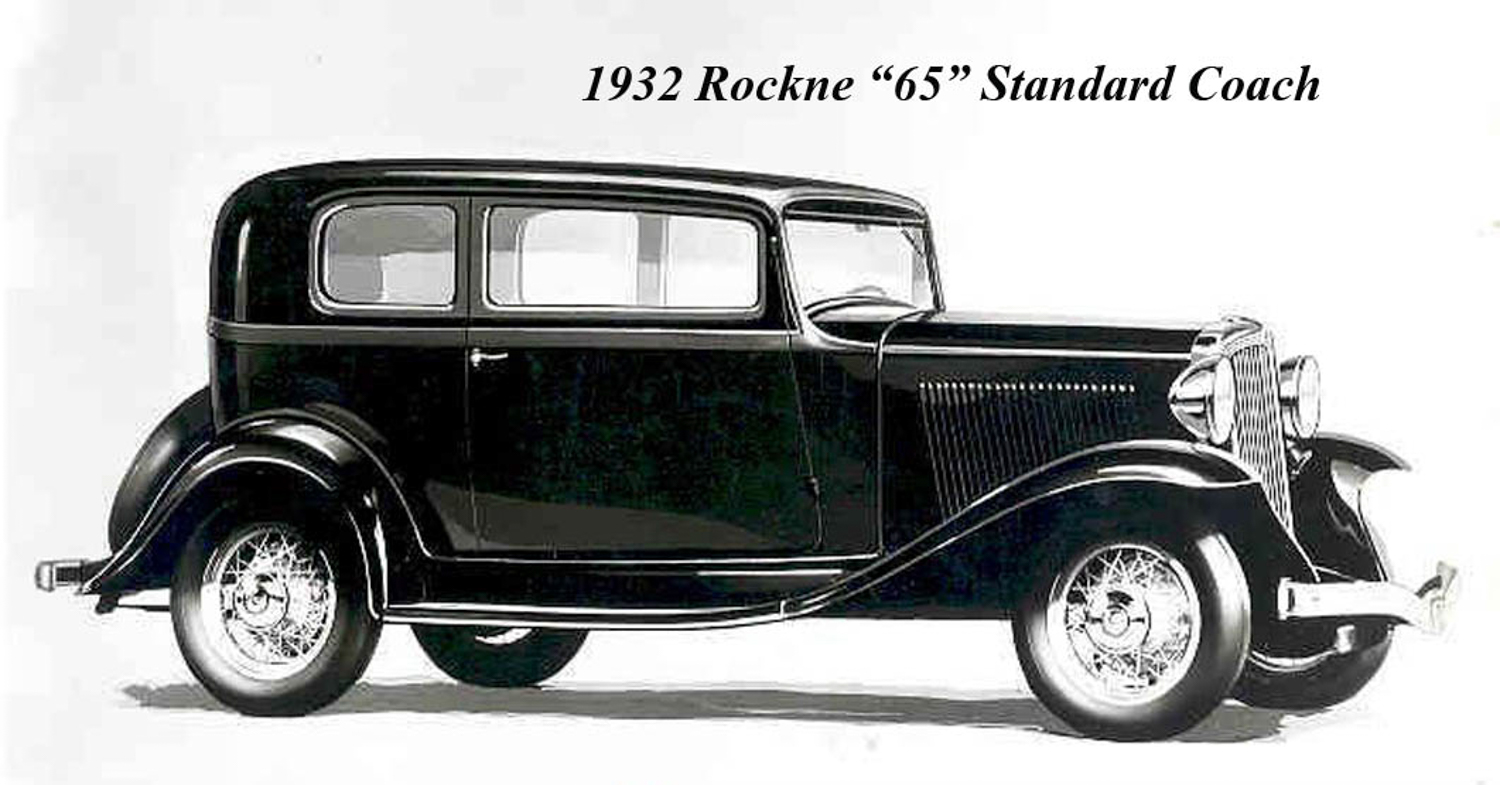
March 1933 saw Erskine and Fish out of Studebaker, with Erskine ultimately committing suicide. The bankruptcy court appointed receivers for the company – Paul G. Hoffman and Harold S. Vance, both from Studebaker, would be President and Chairman, respectively. Ashton Bean, from White, was the third receiver. Pierce Arrow was sold at a loss to eliminate the drain on funds and provide a little cash, and the White stock was sold – White was back on its own again. The court approved the reorganization, and there was a new Studebaker Corporation established in January 1935.

As the economy slowly improved, the company made a profit in 1936. It produced new models on only two wheelbases instead of three and priced them competitively. Studebaker actually did better than the rest of the industry. A couple things happened in 1938. First, Raymond Loewy’s design firm drew the ’38 car, and it was beautiful. And Studebaker dropped one of its odder model names – the “Dictator.” The meaning of that word took on an uncomfortable reminder of what was going on in Germany and Italy at the time. Instead, there were to be three series: Commander, State Commander, and State President. They had great styling but names that did not stand the test of time.

Studebaker needed to increase its sales volume, so Hoffman and Vance decided to get into the low-price market, then controlled by Ford, Chevy, and Plymouth. The Studebaker Champion was their entry – it was much lighter than other sedans, giving better fuel economy and tire life. The Champion was a success and helped produce a nice profit for the company in 1939. The potential for another incredible year in 1940 was interrupted by a need to provide war materials to the Allies fighting a very difficult war in Europe and Asia. There were materials shortages for civilian vehicles, but losses in sales of automobiles were offset by the military contracts Studebaker won. New civilian models were planned for 1942, but then Japan attacked Pearl Harbor. On January 1, 1942, automobile production was suspended.
During WWII, Studebaker produced more than 63,000 engines for the Flying Fortress bomber, 197,678 trucks, and a number of the amphibious truck called the “Weasel” that had been developed secretly. Studebaker management refused, though, to capitalize on war production, seeing it as their duty to support the American war effort. Sales during the war were up dramatically, but profits were modest.
All automobile companies faced the challenge of converting back from war production to civilian products. Like most, Studebaker simply updated its 1942 design and offered the Skyway Champion in 1946. It’s possible that Studebaker could have sold many more cars (demand was intense for new cars) had they produced new Commander and President models, but they chose to focus on tooling up for a dramatically new model for 1947. Developing the design for the new cars is a story of intrigue within the company. Vice President of Engineering, Roy Cole, did not care for the company’s design consultant, Raymond Loewy, so he secretly got Virgil Exner, a Loewy employee, to work on a separate design. Misleading information about what Studebaker wanted in their 1947 model took Loewy’s designers in a wrong direction, while Exner worked with better information. Exner’s design was selected, and Loewy, understanding the game belatedly, fired Exner. Exner, though, landed softly in a position with Studebaker.
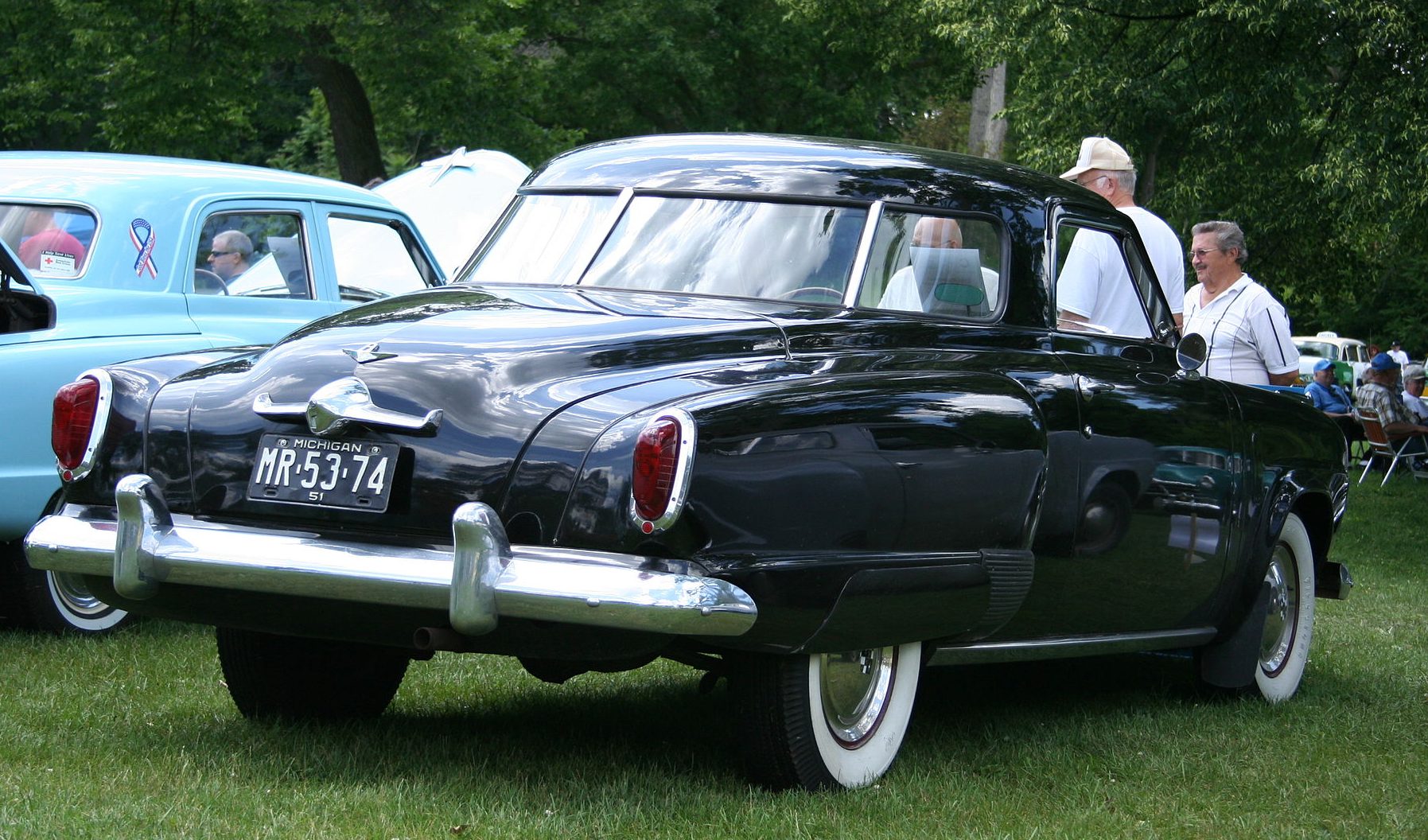
The 1947 Studebaker line was shown to the public in mid-1946, well before any of the company’s competitors had anything new to offer. And the ’47s were stunning. They were wide and had envelope bodies, their roofline was flatter and sleeker, and they had a low, integrated grille. There was also a very pretty convertible and a five-passenger coupe that had a multi-pane rear window that wrapped around giving better rear vision than ever before. It was a very different approach than that of the other auto makers, who wanted to continue to produce modified pre-war models as long as possible. Ford, for example, didn’t have a new model until 1949.
Studebaker’s approach worked and sales were strong. There was also a huge demand for trucks of all sizes, and Studebaker was in a good position to take advantage of that. The company gained 90% of the truck market.

Hoffman was appointed head of the Economic Cooperation Administration by President Harry Truman in 1948, leaving Vance as Chairman and President. Vance agreed to moderate restyling for 1949 in anticipation of another dramatic, and controversial, change for 1950. Bob Bourke, a stylist for Loewy’s company, was told by Loewy to make the new car look like an airplane. The result was the Bullet Nose Studebaker. It was a surprise design, and it turned out to be quite popular. But there were problems on the horizon for the company, unfortunately.
Studebaker had a history of believing that its workers were people who would do their best for the company, so the company seldom engaged in hard discussion with the union. But the company had established some policies, like payment for piecework, that were proving to be harmful to the company’s productivity. The result was that the company suffered a lower rate of growth, with labor issues, higher taxes and a decision to lower prices all contributing. Profits fell by $5 million, but the company approved increasing dividends by $2 million! There were also plant improvements and new tooling to add a V8 to the lineup. It was a 232.6-cu.in. engine producing 120 hp. Ford and Oldsmobile had V8 engines, but most other companies did not. Then came Korea.
Once again materials shortages affected civilian production, although military contracts partially offset the lost sales. Studebaker continued to have labor problems, and the company decided to accept the demands of the strikers, resulting in increased labor costs that impacted profits. On Studebaker’s 100th anniversary in 1952, facelifts to the current models gave an indication as to the shape of the next models. The Studebakers of 1952 were sleek with a bit of a European look, but they were still American-sized cars. For the year, sales were up, so profits were up, although less than previous years, meaning the profit margin was lower than it had been. Still, the company approved dividends that were 50% of earnings. The problems Studebaker was suffering were certainly imposed by the government control of automobile production because of the war, but they were also self-inflicted – labor costs were high, productivity was low, and dividends were unreasonably high.

The next few years included highs and lows for Studebaker. A high was Bourke’s design for a new coupe. It was low and very European looking. With the post-war demand for automobiles over, Studebaker needed something special, and this coupe was it. It was based on the 120-inch wheelbase of the Land Cruiser, and it was to be produced alongside the existing line of sedans. Then management made a decision that caused the company considerable problems. They wanted the sedans restyled like the coupe with little time available for a serious styling effort. The sedan was on a shorter wheelbase, and the front and rear styling of the coupe did not work on the two and four-door sedans. Where the coupe was low and sleek, the sedans were tall and stubby. Panels and trim were not interchangeable, so tooling was a major cost increase. There were two different body styles with different wheelbases and a total of five body types. Then, in early production, front sheet metal would not mate with the body. Whether because of poor planning or the shortcuts taken, production had to be stopped and the dies remade. Production didn’t resume until January 1953.
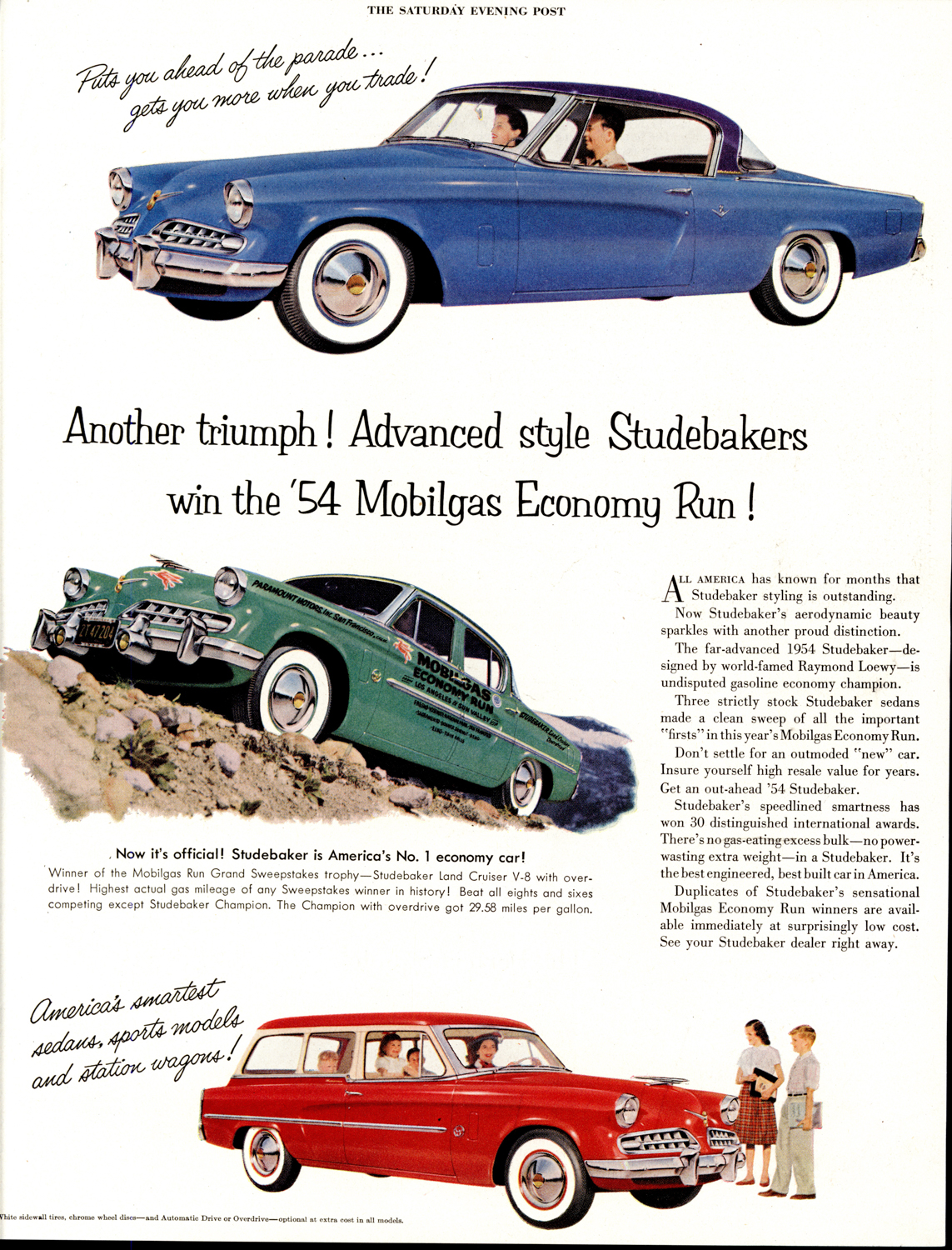
When the cars reached the dealers, another problem became apparent – sales predictions were way off. The Starlight and Starliner coupes were selling much better than expected — as much as twice anticipated — so too few were produced. Sedans were selling poorly, 50% less than anticipated, so too many were produced. Poor build quality was also showing up, affecting the company’s reputation.
That was when Ford decided it wanted to take over Chevrolet’s place as the top seller in the U.S. and began the “Ford Blitz.” Ford overproduced, forcing dealers to slash prices on the cars they sold. Chevrolet, having been challenged, joined the sales war. The independent manufacturers all suffered. In 1953, Studebaker’s profits fell 80%, assets were 25% down, more than $3 million was lost in working capital, and the company’s net worth dropped $4.3 million from 1952. Dividends were higher than in 1952. It appears that Vance and Hoffman, who had returned to the company, were making the same mistake Erskine had – paying outrageous dividends to keep investors happy when the company was not well.
Studebaker finally produced a station wagon, appropriately named the “Conestoga.” Station wagons were selling well, but Studebaker’s entry was late and it was a two-door wagon when four-door wagons were more popular. Even with decent sales of the Conestoga, the fiscal situation was still poor. Hoffman entered into negotiations with the union, and the union compromised, but not enough to fully address the issue of expensive labor costs. Studebaker’s management had to start a serious search for a merger partner, but the company had to overcome some of its own history when it came to merger proposals. During the 1940s, George Mason approached Studebaker about a merger of Studebaker, Nash, Hudson, and Packard. Vance said no. In 1953, Studebaker was again approached by Packard, and Vance again said no. It was a different story in 1954.

Both Studebaker and Packard were in trouble in 1954. Studebaker was broke but still had an excellent dealer network; Packard was losing money, but it still had some cash. The two companies were not competitors, so the merger was completed on October 1, 1954, with Hoffman as the Chairman and James Nance, of Packard, the President of the new Studebaker-Packard Corporation. In order to complete the merger quickly, both companies agreed to forgo any in-depth review of the other’s books. Nance eventually became concerned about Studebaker’s financial situation and sent his Vice President of Finance to review the company’s accounts. That revealed that Packard should have looked more closely at their potential partner before the merger. Worse, Studebaker had claimed that the break-even point was production of 165,000 cars; in fact, it would likely take a production of 282,000 cars for Studebaker to just break even, primarily because of poor productivity in Studebaker’s facilities. Yet, there was more bad news to come. Under George Mason, there had been a reciprocity agreement between the new American Motors Corporation and Studebaker-Packard. When Mason died suddenly, George Romney took over as Chairman of AMC and learned that Studebaker-Packard was not upholding their part of the agreement. He approached Nance, and Nance denied there was any agreement of reciprocity, so Romney decided to stop buying engines from Studebaker-Packard and have AMC build their own. Ultimately, the blame for the mess Studebaker-Packard found itself in could be laid on the managers of both Studebaker and Packard. Their lack of due diligence as they considered the merger put the new company in a precarious position.
There was a mild facelift of Studebakers in 1955 and the Conestoga was doing well. Sedans, though, were not selling well and sales of the coupe were down. The company did produce an up-market President line with two sedans, a coupe, and a hardtop. This line was attractive, based on a longer wheelbase, and had an attractive interior. Dealers were having trouble selling the 1955 models and started pushing for something that would attract people to their showrooms. What they got was the President Speedster.
1955 Studebaker President Speedster
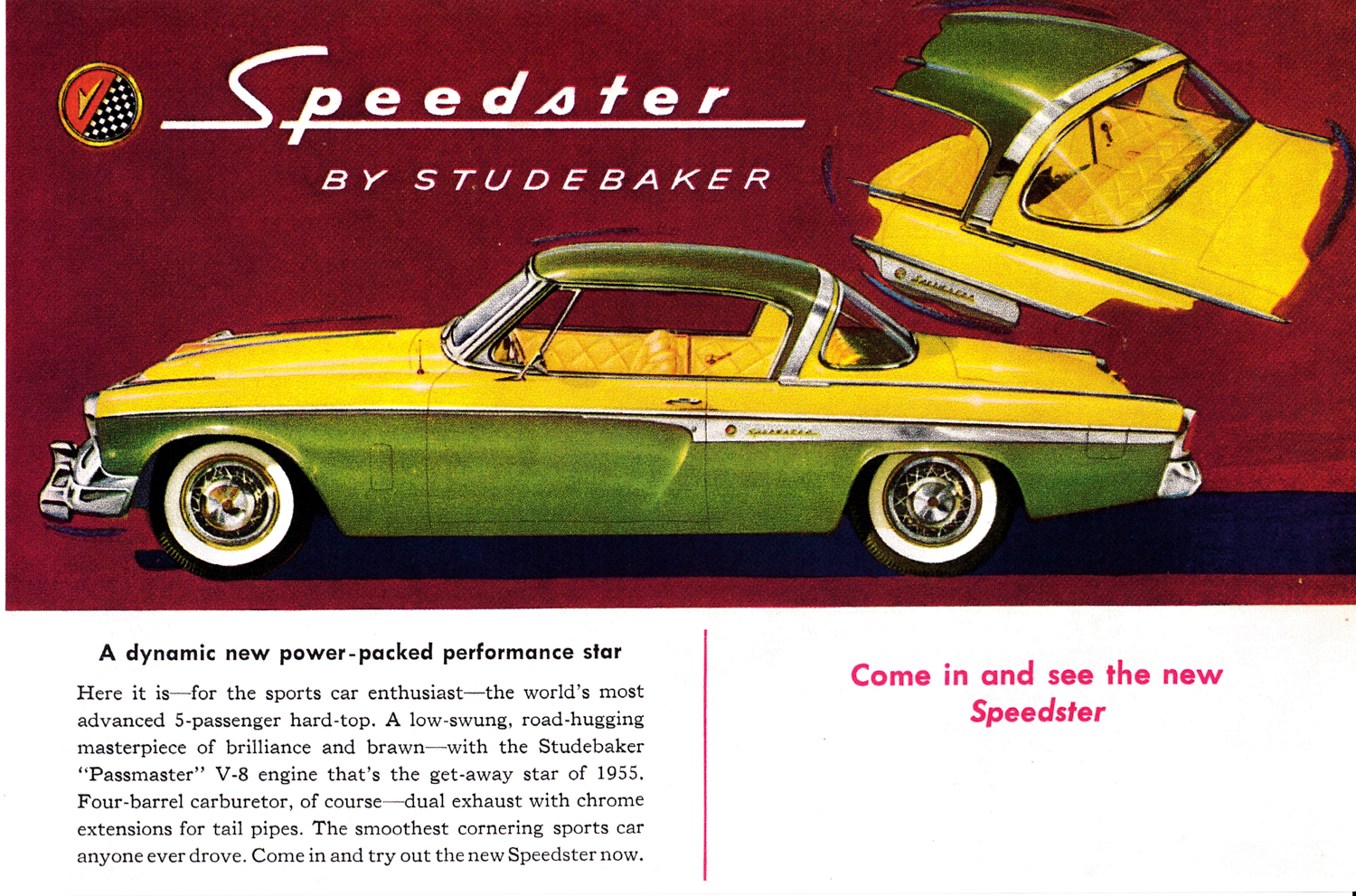
The company heard their dealers, but they were reluctant to move a new car into production. The decision was to produce only 14 cars and put them on the car show circuit. They would respond with production if there was enough interest – there was. The Speedster, a name the company had not used in 30 years, was based on the President hardtop coupe, already an attractive automobile, but maybe just a bit plain, especially when compared to the Speedster. When production began, the model would be offered in six, two-tone and two, three-tone color schemes, with a late addition in black. The paint schemes were produced in series. The first models were Sun Valley yellow and Hialeah green and were produced for three or four months, then that scheme was replaced by pink and gray, then pearl and gray, black and white, and gray and white. The three tone cars were pink, gray, and white and green, black, and white. Exterior enhancements included a lot more bright work than the standard President. The Speedster had new bumpers with fog lights built in, a stainless roof band, specific trim that included a hood-length hood ornament (gold on the green/yellow cars), Speedster nameplates and checkered emblems, and chrome-plated ashtrays, rear-view mirror, tinted windows, and tailpipe extensions on the dual exhausts.
The Speedster would have considerable more chrome than the standard President models and almost as much as other competitors’ 1955 models. Inside the car, the changes were even more luxurious. The seats were diamond-quilted, genuine top-grain leather, there was carpeting front and rear, a map pocket on the passenger side kickpanel (there was no glovebox), an eight-tube pushbutton AM radio with an interior remote controlled antenna, a Stewart-Warner 160 mph speedometer and 8,000 rpm tachometer in a striking engine-turned facing, turn signals, electric clock and a cigarette lighter. The special climate control system was called a “climatizer.” Power was by Studebakers 259.2-cu.in. Passmaster V8 producing 185 horsepower at 4500 rpm. Compression ratio was 7.5:1, with an option for 8:1 available. There was a choice of a standard three-speed, a three-speed overdrive, or two-speed automatic transmission. Standard equipment also included an oil filter and oil bath air cleaner, power steering and brakes, four barrel carburetor, dual backup lamps, triple horns, two-speed electric wipers, tubeless whitewall tires and wire wheel covers. The car cost $3253, or about $800 more than the standard President hardtop coupe. It was the only Studebaker to top $3000 in 1955. Only 2,215 Speedsters were produced, making them a very desirable collector car. It was a one-year model, so many of the special trim pieces are as rare as the Speedsters themselves. A search of the Studebaker register shows that only around 310 Speedsters survive in all conditions, and few of them are show quality.
Studebaker Speedster Engine No. P-6223, Model 6H K7

One surviving Studebaker President Speedster in show condition is a numbers matching car that belong to Ray Petros. Petros is a long time Studebaker enthusiast (see “Driven: 1963 Studebaker Avanti R1,” https://dev.sportscardigest.com//1963-studebaker-avanti-r1/ ). That he developed a passion for Studebakers is no surprise. His grandfather immigrated from an island off Croatia and initially went into the grocery business. In 1922, he decided to get into the automobile business with a partner and created Black and Petros to sell Willis, Whippets, and other brands in Pueblo, Colorado. After he bought out his partner, he took on Stearns Knights in the late ’20s then Graham in the ’30s. The family became a Studebaker-Packard dealer in 1954 and kept the dealership until Studebaker ended domestic production in 1964, almost 42 years.
Petros mused about seeing his first Speedster: “One just like this one was the first car I remember seeing as a four-year-old in my Dad’s showroom. We drove by, and it was right in the front windows, and I just thought it was the most gorgeous car possible.” His father sold it to a local doctor who lived a couple blocks from the Petros home. Petros would see it when he walked to and from school. “Every time I’d go by it, I’d say ‘I’m going to have one, one of these days.’” Petros lost track of the car, so he started looking for one like it. He found his locally. It had been bought by a Studebaker club chapter member in the late ’80s. He was an automotive painter, and he did a very nice job in restoring the car. Nearly everything was correct on the car. The previous owner had even bought a special sewing machine so he could restore the leather interior correctly.
Petros bought the car in 1998. There were some authenticity issues that he corrected – he installed the proper carpet, rear speaker, exhaust extensions, and a few other items that weren’t correct. One problem that took some investigation to fix was the tachometer; it did not operate correctly. He finally visited Clive Cussler’s museum, where there was a similar Speedster. He was allowed to crawl around in the car, and he saw that Cussler’s car had a ground wire to the tach. Petros added a wire, and the tach worked fine. One other addition Petros made was an electric fuel pump. He uses it to help start the car on hot days. The rest of the time, the car runs on its mechanical fuel pump.
Petros obviously loves his Studebakers, but he seems to have a special love for the Speedster. His memories from a child are a big part of that, but the Speedster is also a very special car to drive.
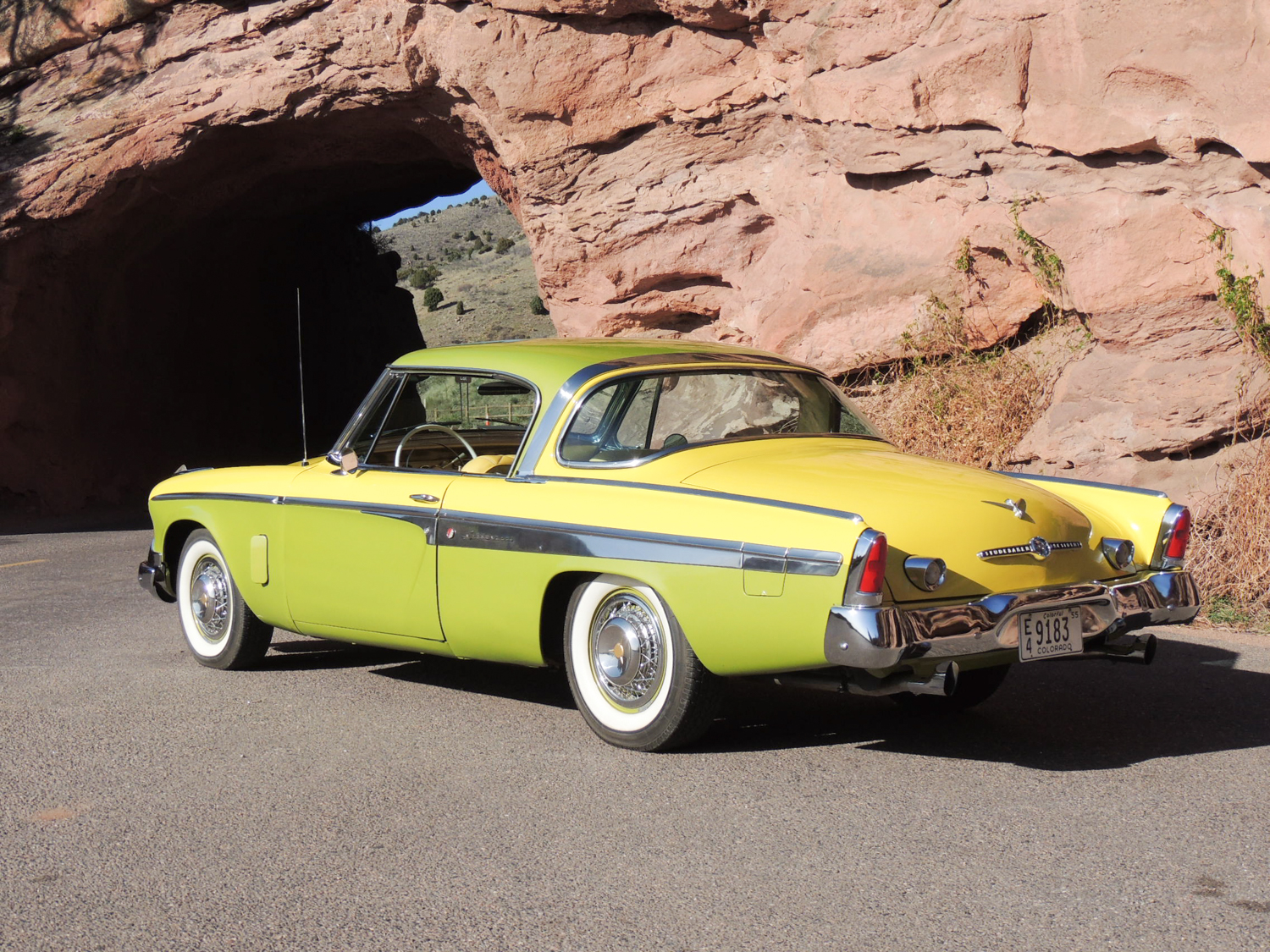
Driving Impressions
Just being seen in this car is enough to make you smile – everyone turns to watch you drive by. But driving it is also a pleasure; it is a very nice car to drive. There were several pleasant surprises. The first was how comfortable the seats are, and visibility from the driver’s seat is great. Then the dash – it is certainly not something you would see in most other American cars of 1955—speedo, 8000 rpm tach, oil pressure, water temperature, fuel, and ammeter. All the information you need – well, oil temperature would be nice, but I’m spoiled. It is important to remember, though, that this is a 1955 American car.
Starting the car, even on a hot spring day at an elevation somewhere near 8,000 feet, was a breeze. The electric fuel pump did what it was supposed to do, and the car started immediately with a turn of the key. The two-speed Borg Warner automatic consists of low and high gear. Smooth start with the shifter in high, then onto the mountain roads around Petros’ place. On the level, the car is smooth. It has a low center of gravity, especially compared to Chevies or Fords of the time, so it actually corners better than expected for a 3,300-pound car. I remember smiling and saying “sweet” when taking the car through some sweeping curves on a nearby U.S. highway. With power steering and a large diameter steering wheel, steering effort is very reasonable. The steering was a little loose, so it took a bit of concentration to keep the car where I wanted it. Brakes are important in the mountains, and the assisted drum brakes on the Speedster do a more than acceptable job. For an early stop, I pressed a bit too hard on the brakes and was quite surprised at how quickly we stopped. Acceleration produced smiles – the car is quick from a stop, and when the transmission drops into low, it really takes off. Low is important when going up the Colorado hills. All it takes is to keep pressure on the gas pedal to keep the car in low gear.
The Speedster is a very nice driving car. Plus it is beautiful. I enjoy every car I get to profile and drive, but the Speedster is one of the ones I’d love to own.

Specifications
Construction Steel, body on frame
Chassis Two-piece frame, an inverted U-channel with a spot-welded plate
Engine Passmaster overhead valve V8
Displacement 259.2 cid (4248 cc)
Bore/Stroke 3.6 in (90 mm)/ 3.3 in (83 mm)
Power 185 BHP (136.16 KW) @ 4500 RPM
Torque 250 Ft-Lbs (339 NM) @ 3000 RPM
Compression Ratio 7.5:1
Induction Single four-barrel Carter WCFB carburetor
Wheelbase 120.5 in | 3061 mm
Length 206.2 in | 5238 mm
Width 71.3 in | 1811 mm
Front Track 56.7 in | 1440 mm
Rear Track 55.7 in | 1415 mm
Weight 3300 lbs/1496.9 kg
Front Suspension Independent suspension with unequal-length A-arms and coil springs
Rear Suspension Live axle with semi-elliptic leaf springs
Brakes Four wheel drum
Wheels 15 inch steel
Tires 7.10×15 Tubeless
The Rest of the (Studebaker) Story
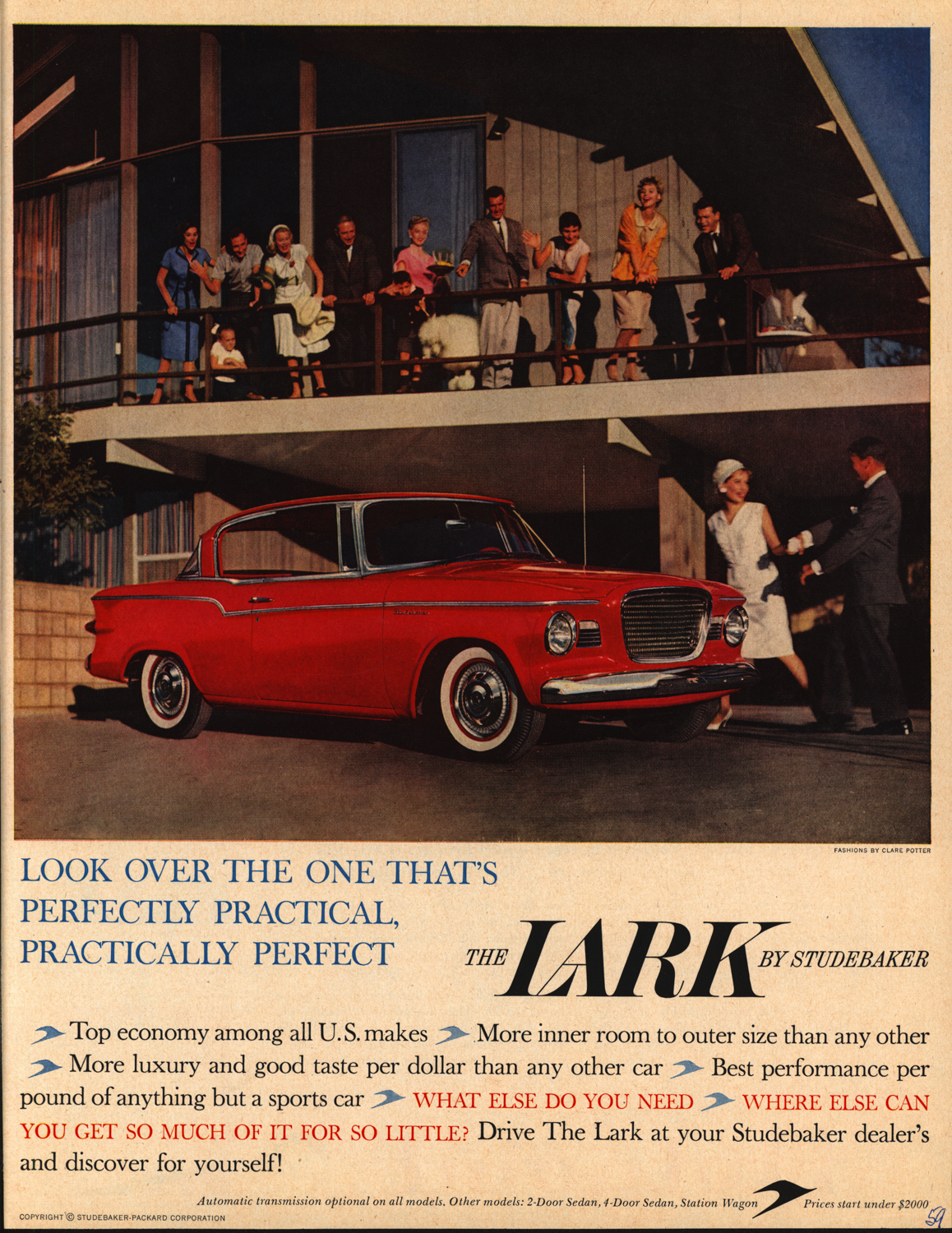
There were ups and down for the company through the latter 1950s and into the ’60s, but there were more downs than ups. One “up” was the Hawk in 1956; another was the Lark in 1958, but they were more than offset by the “downs.” One hit Studebaker experienced was the loss of much of its military money. The Department of Defense decided to consolidate its contracts with fewer companies, and Studebaker-Packard lost most of their contracts. As for the consolidation of the two components of Studebaker-Packard, there was none, so there were still two of everything required to run the corporation. Styling was mostly face-lifts because of the lack of funds to put into new cars. Sales were down, and it appeared that both car buyers and investors seemed to sense that Studebaker-Packard was a dying company.
Roy Hurley of Curtis-Wright was interested in getting what remained of Studebaker-Packard’s defense business, so he orchestrated a “merger” in which he could control Studebaker-Packard without any financial investment. Nance left and was replaced by Harold Churchill, a man who nearly saved the company. To get some cash, plants were sold or shutdown, and the value of the company’s stock was devalued. That provided some funds for 1957, but the old models were simply continued. There were some good developments, including the strength of the Hawk line. Packards were now being produced on Studebaker chassis, and Studebaker became the distributor for Mercedes-Benz in the U.S.
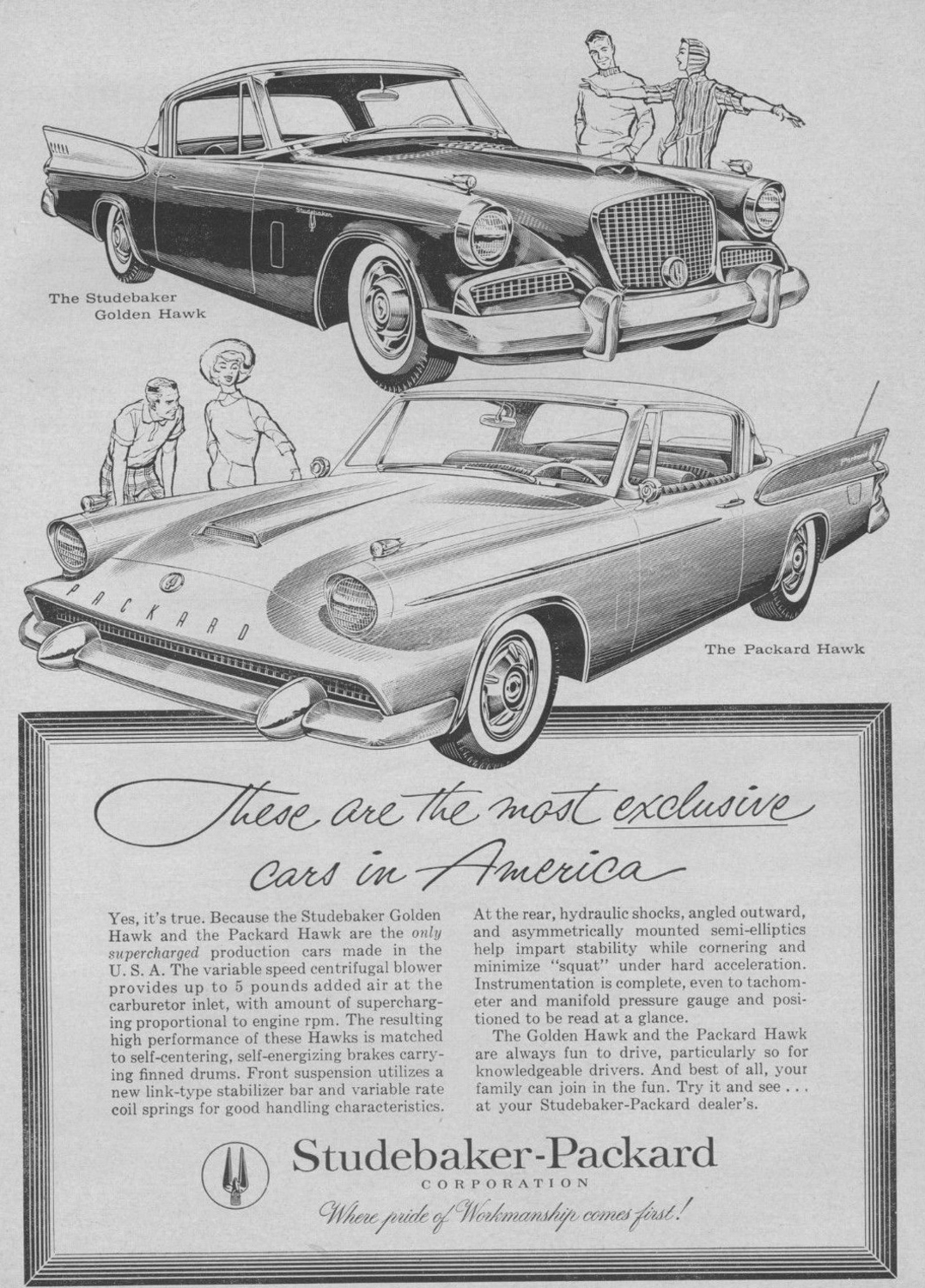
Hurley, before dumping Studebaker-Packard, pressured Churchill to produce a distinctive Packard, a move that eventually killed Packard. Churchill, though, proposed that the company produce the small car that became the Lark. It was a compact car with a spacious interior, and, in 1958, it predated the small cars from the Big Three. In 1959, all the bigger models, except for the Hawk, were eliminated. The Lark was a hit, and, together with trucks and money made from Mercedes-Benz, Studebaker-Packard looked financially fit again. Dealers were even added to sell the Lark.
That’s when the Board of Directors decided that diversification was the solution for the company. They bought a variety of non-automotive companies at a time when the Big Three discovered compact cars. Many of the new dealers jumped ship to sell Chevies and Fords and Plymouths. Churchill continued to support the auto business while the Board was putting more money into acquisitions.
By 1960, the Board of Directors wanted out of the automobile business. Churchill resisted, and the company was reorganized with Churchill replaced by Sherwood H. Egbert. Egbert’s plan for Studebaker-Packard was for more acquisitions, a stronger auto business, more military contracts, and a new focus on foreign sales. There were more acquisitions and some previous companies were sold at a profit. Thanks to the efforts of Brook Stevens on the Lark and Raymond Loewy on the Avanti, the cars continued to look good with little money expended on the designs.

1962 saw “Packard” removed from the company’s name. And it saw a major strike – the plants were down for 38 days. In 1963, sales were horrible. The Studebaker Corporation was losing money primarily because of the automotive division. The decline continued, the South Bend plant was closed, and all production moved to Hamilton, Ontario, Canada. Without the capability of producing engines itself, Studebaker had to buy its engine from Chevrolet. Egbert, who was fighting cancer, was put on indefinite leave and was replaced by Byers Burlingame. Styling improvements continued to be made on the Lark, but when funds were requested for styling the 1967 models, the Board of Directors refused. On March 4, 1966, the corporation announced that automobile production would end the next day.
After the end of auto production, there were more acquisitions, mergers, and sales of assets until the company was hardly recognizable for what it had been. The Studebaker name was dropped in 1978. Studebaker had once been one of the largest American automobile manufacturers. It had been innovative and had produced quality cars and trucks. Sadly, poor management and bad decisions killed the once proud company. Even though the company is gone, many of its fine automobiles and trucks remain for us to enjoy and think about what might have been.
For additional reading about the history of Studebaker, the following are recommended:
- Treasury of Early American Automobiles 1877-1925, by Floyd Clymer
- “Studebaker’s Final Days” by Patrick Foster, Automobile Quarterly, Volume 48 #1, First Quarter 2008
- Studebaker – The Complete History, by Patrick Foster









